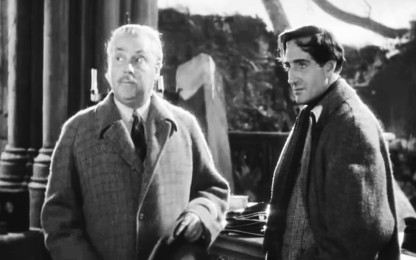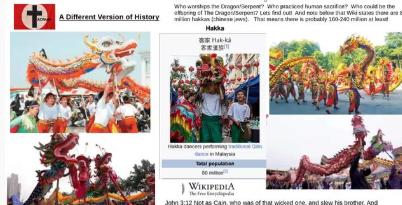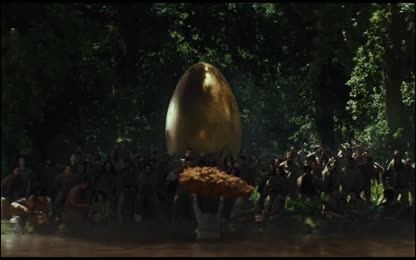Advertisement
Tiffany Dover Pontes Saturnalia Sacrifice in OUR FACES
The Masonic Symbolism of Colours
White, the original colour of the masonic apron, was always considered an emblem of purity and innocence, exemplified in images such as the white lily or fallen snow.
Plato asserts that white is par excellence the colour of the gods. In the Bible, Daniel sees God as a very old man, dressed in robes white as snow (Daniel 7:9). In the New Testament Jesus is transfigured on Mount Tabor before Peter, James and John, when his clothes became ’daz-zling white, whiter than anyone in the world could bleach them’ (Mark 9:3). Officiating priests of many religions wore and still wear white garments. In ancient Jerusalem both the priests and the Levites who performed the Temple rites assumed white clothing.
Among Romans, the unblemished character of a person aspiring to public office was indicated by a toga whitened with chalk. This is the origin of the word ’candidate,’ from candidatus ’dressed in white.’ Verdicts at trials were decid-ed by small stones (calculi) thrown into an urn: white to absolve, black to condemn.
White signifies beginnings, virtualities, the white page facing the writer, ’the space where the possible may become reality.’ White is therefore understandably the colour of initiation. It is a symbol of perfection, as represented by the swan in the legend of Lohengrin. In this aspect it is related to light or sky blue, which in Hebrew is tchelet and may be connected semantically with tichla (perfection, completeness) and tach-lit (completeness, purpose). (See also the obser-vations on the symbolism of blue.) Among the Celts the sacred colours of white, blue and green were understood to stand for light, truth and hope. Druids were robed in white.
White is also connected with the idea of death and resurrection. Shrouds are white; spirits are represented as wearing white veils. White, rather than black, is sometimes the colour of mourning, among the ancient kings of France, for instance, and in Japan. White, finally, can signify joy. Leukos (Greek) means both white and cheerful; as does candidus in Latin. The Romans marked festive days with lime and unlucky days with charcoal.
- Category: TheControllers/TheConspirators,Servants of Evil,Hoax Season,Deceivers of the World
- Duration: 05:06
- Date: 2021-01-22 22:23:25
- Tags: tiffany, dover, pontes, hoax, nurse, faint, saturn, saturnalia, sacrifice, masonic, lodge, freemason, black cube, mecca, chi memorial, pfizer, vaccine, side effect, brittany, vaughn, pandemic, plandemic, casedemic, scamdemic, trump, warp, speed, biden, busted, exposed, crisis actor, double
2 Comments
Video Transcript:
Sorry everybody, I'm not sure if anybody saw the video by Uncle Alice. There was about Tiffany Dover having a day off, the Shimon Moriel. I watched it on there, I left a comment about it about what I saw in the video. And it was just somebody else's coverage of it. But what's interesting is I wanted to do my take on it. And what I want to show first before we go over the video is first of all, we're going to go right to Shimon Moriel's coming from their channel. And it was done two days ago, 27 views is says here, which the count is off, we'll see that. But I don't know if people are really too aware of the black cube worshiping, Saturn, Alia, all that shit, the symbolism, all right, what the black cube represents. It's in front of World Banks, it's in front of the UN, it's the UN Prayer Room, it's all over movies, everything 9-11, it's, we've got the Infinity Cubes, it's sick shit, everything that they do, right. Even in videos, all this crap, all right, it's all over the place, transformers, prayer, mecca, the black cube of mecca, which is really sick, when they walk around it in circles, all right, it's all Saturn, Alia, worshiping, all right. It's all over, I mean, you just look at a blurred picture here, it's like that's them going around it, making the Saturn rings, all right. It's, it's all sick, and there's a reason why I started with that. So we're going to go to the video where it says 27 views, all right. And you can see, it's got one thumb up to nine thumbs down, comments have been turned off, but it's actually got 246 views only, and there's a reason for it, and we're going to watch it, all right, I'm going to stop it at one point, and then we're going to let it finish playing. Now, I think that may be her body double, all right. We really came and see it's, I wish I could zoom in somehow in an image and see that stuff, and see who she, what her name is. But I can't, can't see it, I can't do it. But it does, it's not Tiffany Dover, all right. Tiffany Dover Pontes, she's not even in this video whatsoever, but that may have been her body double, where he'd done it up a little bit, because she did have the bigger chest, Britney Vaughn, all this and everything too, but, all right. Sorry, when you see there, Taylor, there she is one more time, all right. It's the same girl, all right. I'm pretty sure it's Britney Vaughn. Do you see right here too, right here at the desk, all right. Watch what they do. All right, to close in on the black cube, the flowers, even the purple flowers in there, and the white rose, which the white rose, if you guys understand what white represents, into Freemasonry as well, especially with the women, all right. Let me show you guys. All right, so you got the black cube, all right. The Freemasonry White. All right, white is Freemasonry as a master, right. You guys can go look through how that shit is, how it goes with it, and what it represents, all right. I don't want to get too deep into this shit with the video, all right. But it's, when you go through all the colors and everything like that, it's what they do, all right. It's the representation of the women. I've done it before and covered it with like Hillary Clinton back then too. It's just sick shit to throwing it in your face, the representations, the color, the large acknowledgments, the new world order, Saturn worshipping, and she's been sacrificed. She is gone, everybody. There was only one other thing up there. So I'll let you guys go look. I was looking it up on the internet and everything like this, there's absolutely nothing for it. There's no images from it, there's no announcements really on their pages, all these things. It's sick. It's sick what they did with that final closing. It really is in your face.










 Donate
Donate







